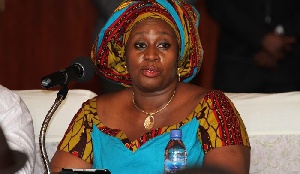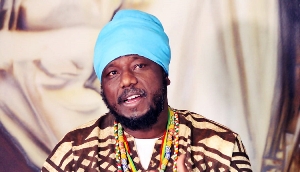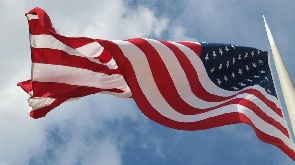There is absolutely nothing wrong to be patriotic, yet patriotism is not by indulging in Machiavellianism.
What’s more, the lunatic fringe of politicians and their apple-polishers should note that the fact that they are seeking power, or are aiming to cling onto power, does not give them an audacity to engage in electoral violence, before, during and after the 2016 general elections.
It is no denying of the fact that electoral tensions before, during and after elections had culminated in conflicts in countries such as Ivory Coast, Kenya and Zimbabwe.
It must also be noted that the conflicts in those countries did not happen overnight, for the perpetrators started the process gradually. They wanted to change the outcome of the elections, hence resorting to violence, before and during the elections.
We should not also lose sight of the fact that the widespread violence following relatively orderly balloting in elections in Kenya on 27 December 2007, and in Zimbabwe on 29 March 2008 accentuate the significance of understanding the electoral tension before, during and after elections.
As a matter of fact, Ghana, your country, my country, must not and cannot go that way!
The fact of the matter is electoral violence before and during elections threatens the individual's right to vote, which is valued both as an opportunity to affect the outcome of specific elections.
All the same, many electorates are unperturbed by threats because of the enhanced sense of personal well being derived from the "feeling of being involved and having political influence" and "inclusion, identity, and self-determination.
It is also true that the experience of attempted intimidation before and during elections deters some potential voters from exercising their democratic rights both in the near and long term (Hickman 2011).
For, the thought of preventing eligible voters from exercising their democratic rights is criminal, and ought to be condemned with no uncertain terms, for every eligible voter must feel free to exercise his/her democratic right without any interference from any quarters.
By and large, it has been well documented that inter and intra ethnic tensions before, during and after elections often cause conflicts (Hickman 2011). Typical examples are Kenya 2007 and Zimbabwe 2008 elections respectively.
For example, in his 2011 meta-analytic studies, Hickman recounts that the primordial political cleavage in Kenya maps membership in three ethnic blocs—“Kikuyu/Embu/Mem, Kalenjin/Maasai/Turkana/ Samburu, and Luo”; “none of which comprises a majority of the national population”.
On the other hand, Hickman observes that political divisions in Zimbabwe were once inter-ethnic, mapping membership in the two major ethnic groups: “the majority Shona and the minority Ndebele”.
However, the most prominent contemporary political division in Zimbabwe is clearly “intra-ethnic rather than inter-ethnic: among the Shona”.
More specifically, however, where the post-election violence that is the focus of this was largely inter-ethnic in Kenya, it was intra-ethnic in Zimbabwe.
In Kenya the violence was centred around two regions: “the Rift Valley and Nairobi”.
In Zimbabwe the violence was concentrated in the “provinces of Mashonaland, in the centre and east of the country, rather than in Matabeleland, in the west of the country”.
Hickman explicates further that in Zimbabwe, “the security forces were generally complicit in the post-election violence, with police and military personnel perpetrating acts together with ruling party militants”.
“In Kenya, some police personnel were complicit in the post-election violence while others performed their proper duties”.
What’s more, inter-ethnic fighting over land in the Rift Valley and opportunistic criminalities by gangs in Nairobi were evident in the violence in Kenya.
In contrast, these were largely absent in Zimbabwe, where the violence was characterized by intra-ethnic partisanship.
Hickman explains further that Kenya’s 2007 general election reflected decades of inter-ethnic competition. “From 1966 to 1978, Kenya was ruled by President Jomo Kenyatta and Vice President Daniel Arap Moi's -Kenya African National Union (KANU)”.
“Kenyatta, a Kikuyu, and Moi, a Kalenjin, represented KANU's ethnic alliance between the Kikuyu/Embu/Meru and the Kalenjin/Maasai/ Turkana/Samburu”.
“Following the death of Kenyatta in 1978, President Moi favoured the Kalenjin/Maasai/Turkana/Samburu”." Land competition between native Kalenjin/Maasai/Turkana/Samburu and Kikuyu settlers in the Rift Valley thereafter emerged as a flashpoint for inter-ethnic violence”.
“KANU's dominance ended in the 2002 general election, when its Kikuyu presidential candidate Uhuru Kenyatta defeated by a fellow Kikuyu, National Rainbow Coalition (NaRC) presidential candidate Mwai Kibaki, supported by Luo leader Raila Odinga. The subsequent bitter falling out between Kibaki and Odinga, caused by Kibaki's failure to fulfil his promise to support Odinga as candidate for the presidency after serving one term, meant that the two would face one another as presidential candidates in the 2007 general election”.
All the same, public opinion survey findings reveal that an overwhelming majority of Kenyans do not see themselves as narrow minded and ethnic loyalists.
And, unfortunately, the civic idealism expressed in such self-conceptions largely succumbed to ethnic identity and interest in their actual voting decisions. “Party of National Unity (PNU) presidential candidate Kibaki won most of the votes of the Kikuyu/Embu/Meru ethnic bloc and Orange Democratic Movement (DM) presidential candidate Odinga won most of the votes of the Luo and the Kalenjin/Maasai/Turkana/Samburu ethnic bloc.
"The Kisii and the Luyha largely supported Odinga, but less exclusively."" The deep ethnic division in Kenya is reflected in public opinion survey findings, which reveal dotted variations among ethnic groups in perceptions of the fairness of the 2007 election”.
“The violence that followed the announcement of the elections results—left 1,133 dead, many others wounded and hundreds of thousands internally displaced”.
What’s more, Kalenjin and Massai targeted Kikuyu in the Rift Valley. “Ethnic gangs in the informal settlements around Nairobi targeted members of other ethnic groups”.
For example, “the sect/organized crime group of Kikuyu called the Mungiki targeted the Luo”.
On the other hand, the outbreak of violence after the 2008 general election in Zimbabwe accentuated the erosion of one-party rule by President Robert Mugabe's Zimbabwe African National Union-Popular Front (ZANU-PF) that began with separate elections in 2000 in which it lost a constitutional referendum and consequently lost parliamentary constituencies to candidates ofMorganTsvangerai's Movement for Democratic Change (MDC).
And, since then the MDC has gained popular support because of deteriorating economic conditions and perceptions of official corruption and lawlessness.
As is true of the period before 2000, opposition to the ZANU-PF came from the minority ethnic Ndebele, but also and more importantly from among the majority ethnic Shona, which meant that the ruling party found itself with a declining popular base.
The ZANU-PF and MDC continued their struggle in the 2002 and 2005 parliamentary elections, with the former having to "deploy the full repertoire of oppression and persecution" to legislative majorities."
All the same, the ZANU-PF tolerated the existence of opposition parties that contested elections but deny them the possibility of ever winning elections.
As was true in the previous presidential election in 2002, incumbent president Robert Mugabe's major opponent in the March 29, 2008 presidential election was Morgan Tsvangirai. The MDC leader developed a national following by serving first as leader of the Zimbabwe Congress of Trade Unions (ZCTU) leader and later as president of the National Constitutional Assembly.
It must be noted that intimidation and violence were widespread in the 2002 contest, with 40 MDC candidates and supporters being perished.
“Electoral intimidation and violence were largely absent before and during the polling in the 2008 general election”. Instead, intimidation and violence by ZANU-PF supporters and security forces against MDC supporters erupted after polling. “In the end, these succeeded in forcing MDC candidate Morgan Tsvangirai to withdraw from the June 2008 second round runoff election five days before it was conducted”.
However his name remained on the ballot and the election took place. Unsurprisingly, Mugabe was victorious in the election, which marked impressively and puzzlingly high voter turnout in the official election returns.”
In ending, I would like to challenge the lunatic fringe of politicians and their teeming supporters to refrain from Machiavellianism, before, during and after the general elections, because Ghanaians do not wish to experience the apocalypse of electoral violence.
May God bless Ghana!
K. Badu, UK.
References:
Hickman, J 2011, EXPLAINING POST-ELECTION VIOLENCE IN KENYA AND ZIMBABWE, Journal Of Third World Studies, 28, 1, pp. 29-46.
JOTIA, A 2011, Educating for Democratic Engagement in Botswana's Democracy: Challenges of Promoting Democratic Education, Journal Of Social Development In Africa, 26, 1, pp. 135-160.
Seirlis, J 2011, Laughing all the way to freedom?: Contemporary stand-up comedy and democracy in South Africa, Humour: International Journal Of Humour Research, 24, 4, pp. 513-530.
Opinions of Saturday, 11 June 2016
Columnist: Badu, K














